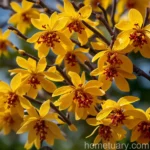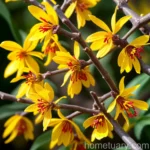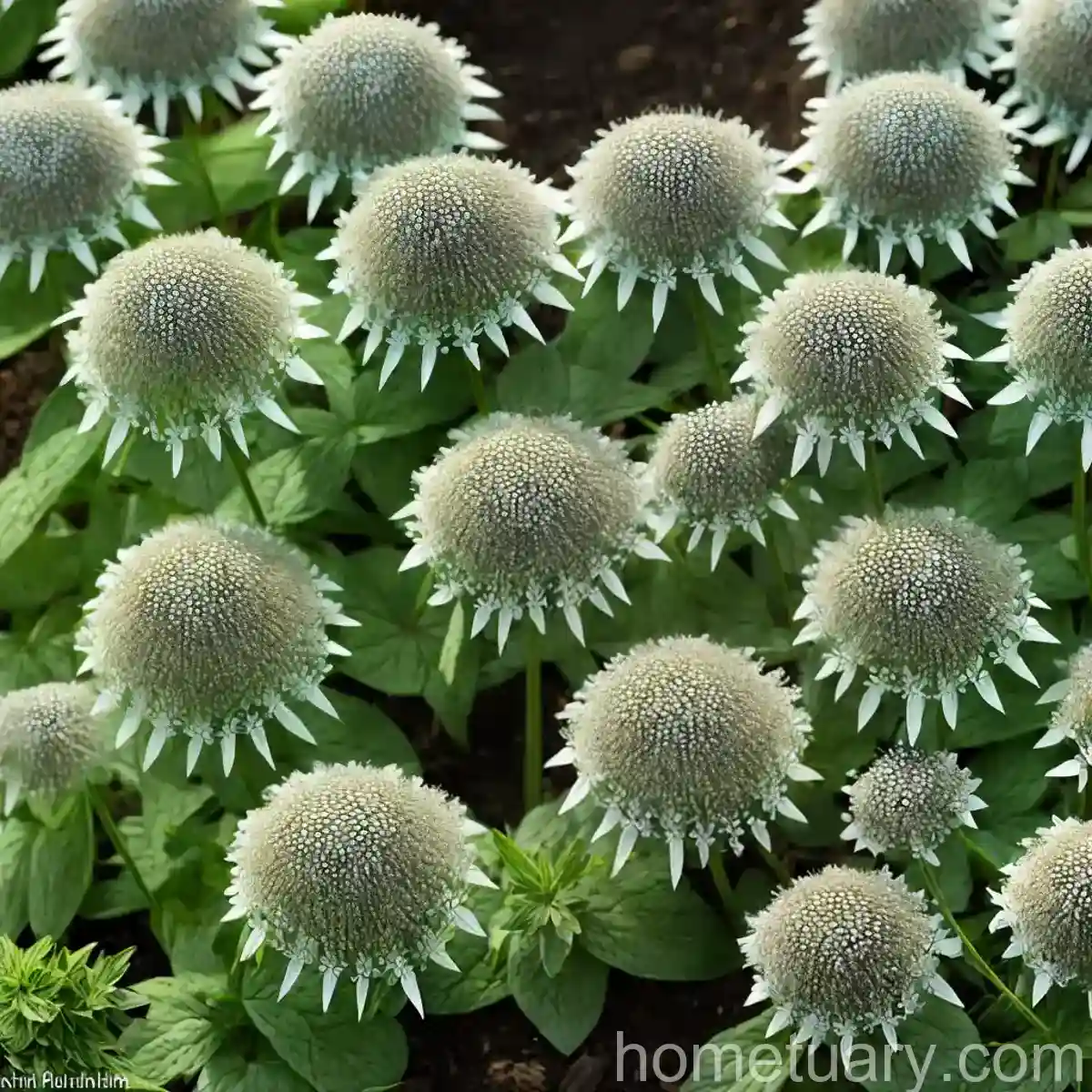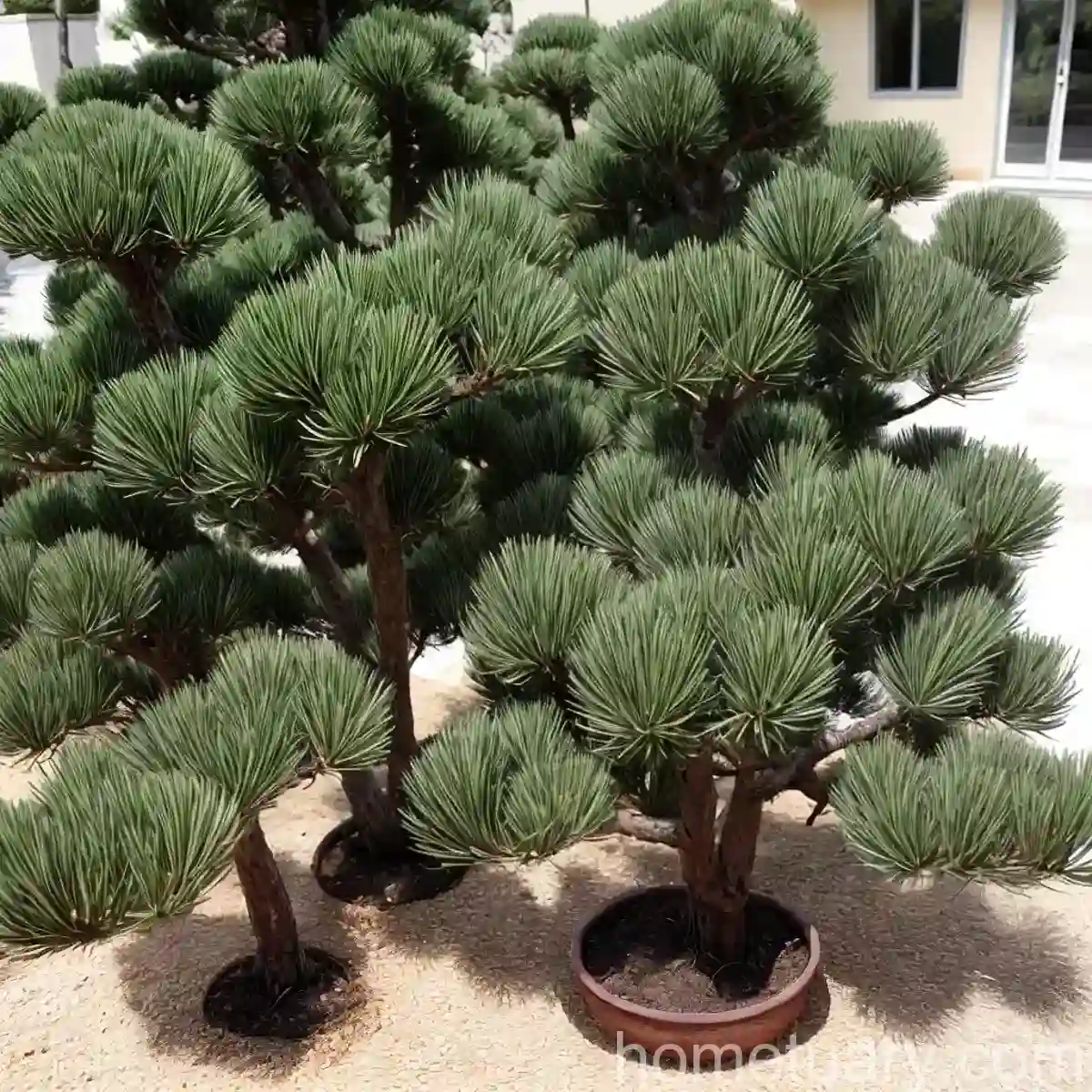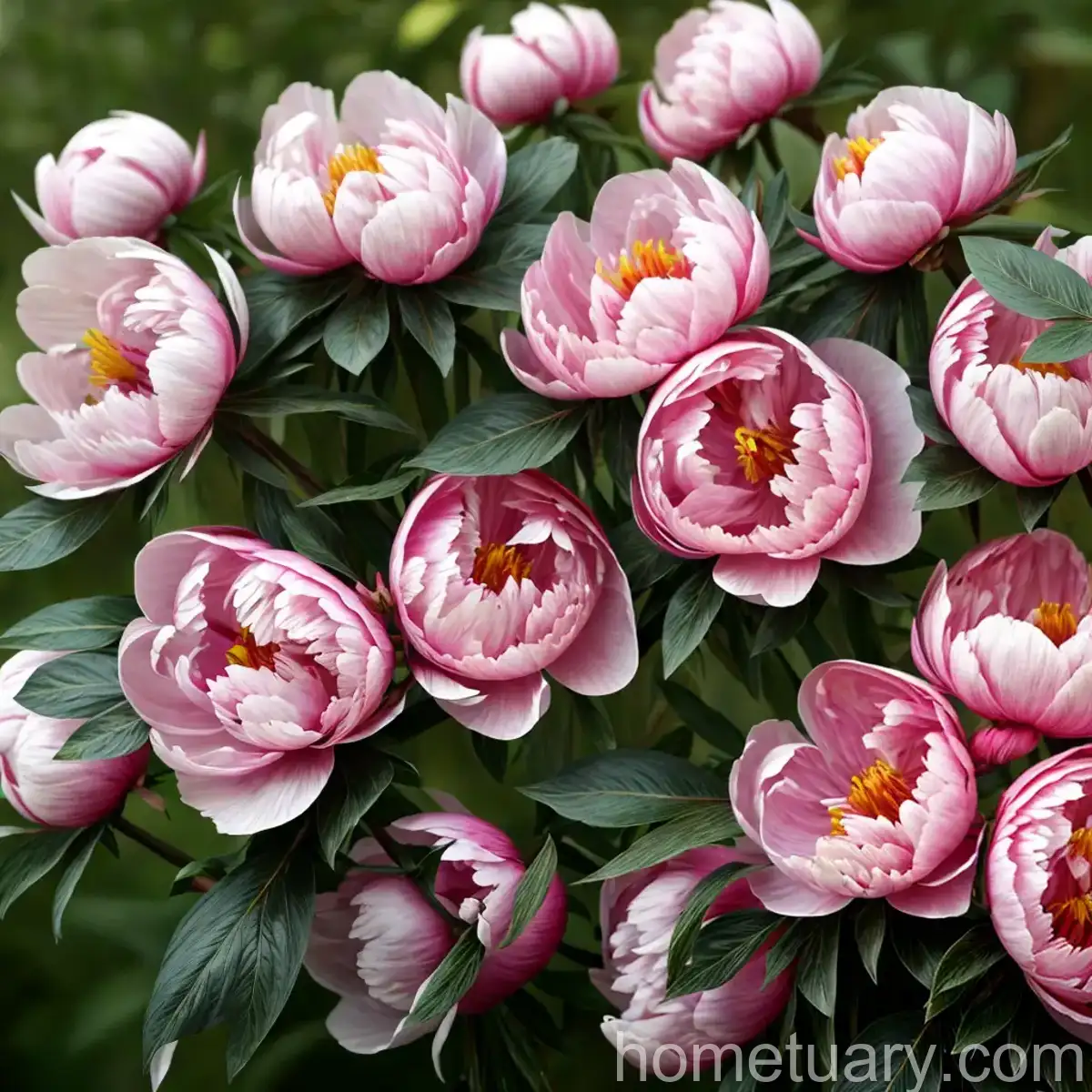The Enigmatic Chinese Witch Hazel (Hamamelis mollis ‘Imperialis’)
Introduction
The Chinese witch hazel, scientifically known as Hamamelis mollis ‘Imperialis,’ is a beguiling plant that captivates with its delicate, spidery blossoms, vibrant fall foliage, and rich cultural history. This blog post delves into the multifaceted world of the Chinese witch hazel, exploring its cultivation, uses, maintenance, and much more.
What is Chinese Witch Hazel (Hamamelis mollis ‘Imperialis’)?
Chinese witch hazel, a member of the Hamamelidaceae family, is a deciduous shrub native to China. Under the binomial nomenclature, it is classified as Hamamelis mollis ‘Imperialis,’ with the species name ‘mollis’ alluding to the plant’s soft and velvety leaves. Its common name, witch hazel, stems from the Old English ‘wice’ which means ‘pliant’ or ‘bendable.’ This moniker is attributed to the shrub’s flexible branches and its historical use in dowsing rods.
Key Takeaways
1. Culture
Chinese witch hazel thrives in temperate climates, particularly in the eastern and southeastern regions of the United States. It flourishes in hardiness zones 5-8 and prefers well-drained, slightly acidic soil.
2. Uses
This versatile plant serves various purposes, from medicinal applications to ornamental landscaping. Its extract is utilized in traditional medicine, while its appealing blossoms and vibrant foliage make it a popular choice for gardens and parks.
3. Water
Chinese witch hazel requires regular watering, especially during its initial establishment. While it can tolerate short periods of drought, it generally prefers consistently moist soil.
4. Sunlight
Partial shade to full sun is the ideal light requirement for Chinese witch hazel. It is essential to provide adequate sunlight to ensure robust flowering and vibrant foliage.
5. Fertilizer
Applying a balanced, slow-release fertilizer in early spring can bolster the growth and overall health of the Chinese witch hazel. It is advisable to follow the recommended application rates to avoid over-fertilization.
6. Soil
The plant thrives in well-drained, slightly acidic soil. Amending the soil with organic matter can improve its texture and nutrient content, fostering optimal growth.
7. Pruning
Pruning is essential for maintaining the health and aesthetics of Chinese witch hazel. It is typically performed after flowering to shape the shrub and promote robust growth.
8. Propagation
Chinese witch hazel can be propagated through various methods such as seed sowing, softwood cuttings, and grafting. Each approach has its merits and is suited to different circumstances.
9. Container Popularity
Its compact size and stunning ornamental features make Chinese witch hazel well-suited for container gardening, offering an exquisite addition to patios and smaller outdoor spaces.
10. Common Diseases
While Chinese witch hazel is relatively resistant to diseases, it can occasionally fall victim to certain pathogens and pests. Implementing proper care and disease prevention measures is crucial in maintaining its health.
11. Disease Diagnosis
Accurately diagnosing diseases that afflict Chinese witch hazel is pivotal for instituting targeted treatment and management strategies. Recognizing symptoms and signs of common diseases is imperative in ensuring the plant’s well-being.
12. Common Pests
Several pests, including aphids, scale insects, and spider mites, can pose a threat to Chinese witch hazel. Monitoring the plant for signs of infestations and employing suitable control measures is vital.
Botanist’s Tips
The cultivation and maintenance of Chinese witch hazel necessitate a tailored approach to optimize its growth and ornamental value. This includes regular watering, ensuring sufficient sunlight, and periodic pruning to shape the shrub and promote prolific flowering.
Fun Facts
- The bark and leaves of the Chinese witch hazel are utilized in traditional Chinese medicine for their astringent and medicinal properties.
- Chinese witch hazel flowers emit a delicate, spicy fragrance that enhances the sensory appeal of gardens and landscapes.
Links to External Resources
For more information on Chinese Witch Hazel, refer to the following resources:
- The American Horticultural Society: Chinese Witch Hazel
- Royal Horticultural Society: Hamamelis
- University of Maryland Extension: Witch Hazel
In the subsequent sections, we will explore each aspect of the Chinese witch hazel in greater detail, providing comprehensive insights into its cultivation, maintenance, and utilization in various settings. Let’s embark on an expedition to unravel the enchanting world of Chinese witch hazel!
Chinese Witch Hazel Varieties
The Hamamelis genus encompasses a diverse array of species and cultivars, offering an extensive palette of colors, growth habits, and flowering periods. Some popular Chinese witch hazel varieties include ‘Arnold Promise,’ ‘Birgit,’ ‘Jelena,’ and, of course, ‘Imperialis.’
Hamamelis mollis ‘Imperialis’ Care
Caring for Hamamelis mollis ‘Imperialis’ involves providing the optimal growing conditions and implementing diligent maintenance practices. The following aspects are pivotal in ensuring its vitality:
-
Water Requirements: Chinese witch hazel thrives in consistently moist soil. Regular watering, particularly during dry spells, is essential for its well-being.
-
Sunlight Needs: Providing partial shade to full sun is crucial for robust growth and profuse flowering. Adequate sunlight exposure contributes to the plant’s overall health.
-
Soil Requirements: Well-drained, slightly acidic soil promotes the vigorous growth of Chinese witch hazel. Amending the soil with organic matter enhances its texture and nutrient content.
-
Fertilization: Applying a balanced, slow-release fertilizer in early spring can fortify the plant’s growth and flowering capabilities. However, it is essential to adhere to recommended application rates to prevent over-fertilization.
-
Pruning Tips: Pruning Chinese witch hazel after flowering is vital to shape the shrub and encourage new growth. Removing dead or damaged branches is also integral to maintaining its health.
Growing Chinese Witch Hazel
Cultivating Chinese witch hazel involves creating an environment that caters to its specific requirements. Here are the fundamental aspects of growing this captivating shrub:
-
Selecting Suitable Cultivars: Choosing an appropriate Chinese witch hazel variety based on your local climate and landscape aesthetics is crucial.
-
Planting Guide: Planting Chinese witch hazel in a well-drained and slightly acidic soil, preferably in early spring or fall, sets the foundation for its successful growth.
-
Maintenance: Regular watering, periodic fertilization, and prudent pruning are integral to nurturing thriving Chinese witch hazel plants.
Hamamelis mollis ‘Imperialis’ Pruning
Pruning Chinese witch hazel, particularly Hamamelis mollis ‘Imperialis,’ is a vital maintenance practice that contributes to the plant’s health and visual appeal. Pruning should be conducted in the post-flowering period to shape the shrub and maintain its vigor.
Chinese Witch Hazel Propagation
The propagation of Chinese witch hazel can be achieved through several methods, each with its unique advantages and considerations. Common propagation techniques for Chinese witch hazel include:
-
Seed Sowing: Propagating Chinese witch hazel from seeds entails sowing fresh seeds in well-draining soil and providing suitable conditions for germination and growth.
-
Softwood Cuttings: Using softwood cuttings from healthy, vigorous plants to propagate new Chinese witch hazel ensures genetic uniformity and quicker establishment.
-
Grafting: Grafting desirable Chinese witch hazel cultivars onto compatible rootstock offers a means to propagate plants with specific characteristics and traits.
Hamamelis mollis ‘Imperialis’ Flowers
The distinctive and bewitching flowers of Hamamelis mollis ‘Imperialis’ are a quintessential feature that sets this cultivar apart. Boasting a rich golden hue and a delicate, spicy fragrance, these blossoms are a highlight of the plant’s ornamental appeal.
Chinese Witch Hazel Diseases
While Chinese witch hazel is relatively resistant to diseases, particular ailments such as leaf spot and powdery mildew can occasionally affect the plant. Understanding these diseases and implementing suitable prevention and management measures is vital.
Hamamelis mollis ‘Imperialis’ Foliage
The foliage of Hamamelis mollis ‘Imperialis’ is celebrated for its soft, velvety texture and vibrant green color. During fall, the leaves undergo a stunning transformation, adorning the shrub with a brilliant display of gold, orange, and red hues.
Chinese Witch Hazel Landscaping
Integrating Chinese witch hazel into landscape designs offers an opportunity to enhance the aesthetic appeal of gardens and outdoor spaces. Its unique flowering pattern and vibrant foliage make it a captivating addition to diverse landscape compositions.
Hamamelis mollis ‘Imperialis’ Cultivation
Cultivating Hamamelis mollis ‘Imperialis’ demands attention to its specific requirements, such as optimal growing conditions and diligent maintenance. A tailored approach ensures the plant’s vitality and ornamental value.
Chinese Witch Hazel Planting Guide
The proper planting of Chinese witch hazel is pivotal in establishing healthy and flourishing shrubs. Adhering to recommended planting guidelines and providing suitable care are essential for its successful establishment.
Hamamelis mollis ‘Imperialis’ Maintenance
Sustaining the health and vigor of Hamamelis mollis ‘Imperialis’ necessitates regular maintenance practices, including watering, fertilization, and pruning. Diligent care ensures its sustained vitality and ornamental appeal.
Chinese Witch Hazel Soil Requirements
Optimal soil conditions, characterized by good drainage and slight acidity, are paramount for nurturing thriving Chinese witch hazel shrubs. Amending the soil with organic matter contributes to its texture and nutrient content, fostering robust growth.
Hamamelis mollis ‘Imperialis’ Pollination
Understanding the pollination process of Hamamelis mollis ‘Imperialis’ is essential for ensuring prolific flowering and the development of viable seeds. The plant’s unique reproductive mechanisms contribute to its ornamental value.
Chinese Witch Hazel Seasonal Changes
The seasonal transitions of Chinese witch hazel, particularly the vibrant displays of flowering in late winter to early spring and the striking foliage colors in autumn, enrich the visual interest and allure of the plant.
Hamamelis mollis ‘Imperialis’ Pruning Tips
Adhering to prudent pruning practices, such as shaping the shrub after flowering and removing dead or damaged branches, is essential for maintaining the visual appeal and health of Hamamelis mollis ‘Imperialis.’
Chinese Witch Hazel Sunlight Needs
Providing the appropriate sunlight exposure, ranging from partial shade to full sun, is essential for robust growth, prolific flowering, and vibrant foliage of Chinese witch hazel.
Hamamelis mollis ‘Imperialis’ Therapeutic Uses
The bark and leaves of Hamamelis mollis ‘Imperialis’ and other Hamamelis species are utilized in traditional medicine for their astringent and medicinal properties. These therapeutic applications contribute to the plant’s cultural significance.
Chinese Witch Hazel Water Requirements
Regular watering, particularly during the initial establishment and dry spells, is pivotal for sustaining the vitality and health of Chinese witch hazel plants. Adequate moisture promotes robust growth and prolific flowering.
Hamamelis mollis ‘Imperialis’ Winter Care
Appropriate winter care, including protecting the plant from extreme cold and ensuring sufficient moisture, is crucial for safeguarding the health and vigor of Hamamelis mollis ‘Imperialis’ during the dormant season.
Chinese Witch Hazel Pruning Techniques
Prudent pruning techniques, such as shaping the shrub after flowering and removing dead or damaged branches, are integral to maintaining the aesthetic appeal and vitality of Chinese witch hazel.
Hamamelis mollis ‘Imperialis’ Blossom Time
The captivating blossom time of Hamamelis mollis ‘Imperialis,’ occurring in late winter to early spring, is a prominent highlight that infuses gardens and landscapes with vibrant color and delicate fragrance.
Chinese Witch Hazel Companion Plants
Selecting suitable companion plants to complement Chinese witch hazel in garden compositions and landscapes enhances the overall aesthetic appeal and visual interest of outdoor spaces.
Hamamelis mollis ‘Imperialis’ Root System
Understanding the root system of Hamamelis mollis ‘Imperialis’ is pivotal for ensuring its successful establishment, growth, and long-term vitality. Proper care of the root system is integral to the health of the plant.
Chinese Witch Hazel Flower Arrangement
The distinctive and alluring flowers of Chinese witch hazel present versatile opportunities for creating captivating floral arrangements and enhancing the indoor ambiance with their vibrant colors and delicate fragrance.
Hamamelis mollis ‘Imperialis’ Landscape Uses
Integrating Hamamelis mollis ‘Imperialis’ into diverse landscape designs offers an opportunity to enrich the visual appeal of outdoor spaces and introduce captivating ornamental features.
Chinese Witch Hazel Fragrance
The delicate and spicy fragrance emitted by the blossoms of Chinese witch hazel enhances the sensory appeal of gardens and outdoor spaces, contributing to the overall ambiance and allure.
Hamamelis mollis ‘Imperialis’ Bark Characteristics
The unique bark characteristics of Hamamelis mollis ‘Imperialis,’ characterized by its smooth texture and subdued coloration, contribute to the plant’s visual interest and aesthetic appeal, particularly during the dormant season.
Chinese Witch Hazel Flowering Period
The exquisite and prolific flowering period of Chinese witch hazel, commencing in late winter to early spring, enriches gardens and landscapes with vibrant colors and delicate, spidery blossoms.
Hamamelis mollis ‘Imperialis’ Winter Interest
The impressive winter interest exhibited by Hamamelis mollis ‘Imperialis,’ characterized by its striking bark and captivating silhouette, contributes to the visual appeal and allure of outdoor spaces during the dormant season.
Chinese Witch Hazel Soil pH
Maintaining slightly acidic soil pH is essential for nurturing thriving Chinese witch hazel shrubs, ensuring optimal nutrient uptake and vigorous growth.
Hamamelis mollis ‘Imperialis’ Indoor Planting
The ornamental value of Hamamelis mollis ‘Imperialis’ extends to indoor settings, where its captivating flowers and vibrant foliage can enrich the ambiance of living spaces, provided suitable growing conditions are met.
Chinese Witch Hazel Wildlife Attraction
The ornamental features of Chinese witch hazel, including its vibrant blossoms and striking foliage, attract and support diverse wildlife, enhancing the ecological value of gardens and landscapes.
Hamamelis mollis ‘Imperialis’ Pruning Schedule
Adhering to a regular pruning schedule, particularly after flowering, is pivotal for maintaining the health and visual appeal of Hamamelis mollis ‘Imperialis,’ contributing to its sustained vitality and ornamental value.
Chinese Witch Hazel Leaf Color
The vibrant and eye-catching leaf colors of Chinese witch hazel, particularly during the autumn season, enrich gardens and landscapes with a brilliant display of gold, orange, and red hues.
Hamamelis mollis ‘Imperialis’ Landscape Design Tips
Incorporating Hamamelis mollis ‘Imperialis’ into landscape designs requires thoughtful planning and consideration of its ornamental characteristics to optimize its visual impact and aesthetic integration.
Chinese Witch Hazel Diseases Prevention
Implementing proactive disease prevention measures, including proper care, adequate spacing, and monitoring for signs of diseases, is integral to safeguarding the health and vitality of Chinese witch hazel.
Hamamelis mollis ‘Imperialis’ Water Drainage
Ensuring proper water drainage and avoiding waterlogged conditions is vital for safeguarding the root health and overall vigor of Hamamelis mollis ‘Imperialis,’ fostering optimal growth and vitality.
Chinese Witch Hazel Uses in Traditional Medicine
The bark and leaves of Chinese witch hazel are utilized in traditional medicine for their astringent and medicinal properties, playing a significant role in cultural and medicinal practices.
Hamamelis mollis ‘Imperialis’ Companion Shrubs
Selecting suitable companion shrubs to complement Hamamelis mollis ‘Imperialis’ in garden compositions and landscape designs enriches the visual appeal and ornamental value of outdoor spaces.
In the subsequent sections, we will delve deeper into various aspects of Chinese witch hazel, exploring its cultural significance, uses in traditional medicine, and the captivating beauty it bestows upon gardens and landscapes. Our journey continues into the fascinating realm of this bewitching shrub, revealing the depth of its ornamental, ecological, and cultural attributes.
Conclusion
Chinese witch hazel, embodied by the captivating Hamamelis mollis ‘Imperialis,’ invites us into a world of enchanting blossoms, vibrant foliage, and rich cultural heritage. Its ornamental allure, therapeutic uses in traditional medicine, and ecological significance make it an invaluable addition to gardens, parks, and landscapes. As we navigate the multifaceted terrain of Chinese witch hazel, we uncover a plant that transcends its ornamental splendor, weaving a tale of cultural, ecological, and horticultural significance. Embracing the enigmatic charm of Chinese witch hazel, we find ourselves immersed in a world of beauty, vitality, and timeless appeal.





